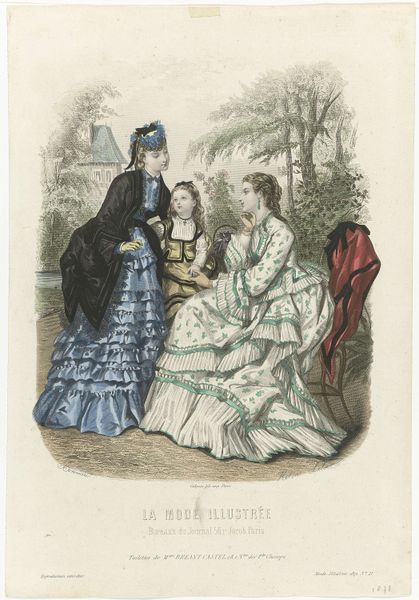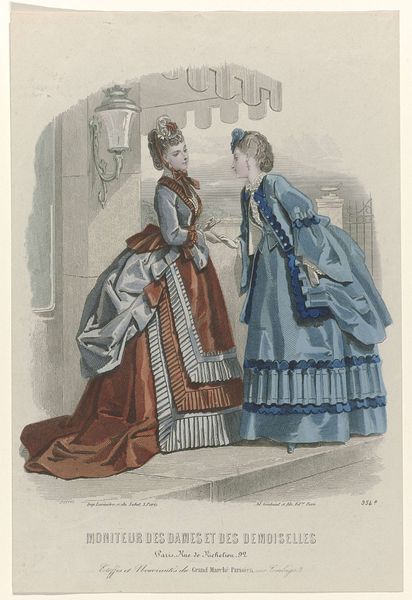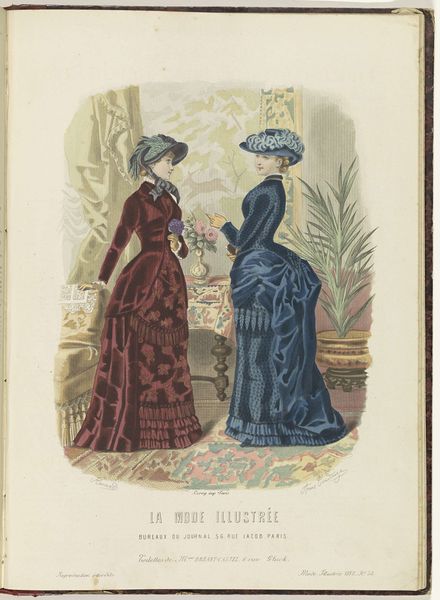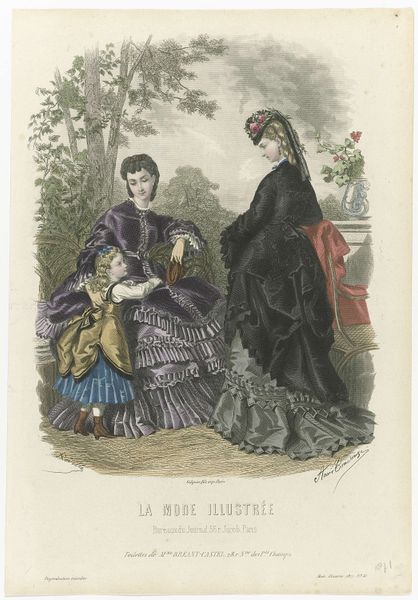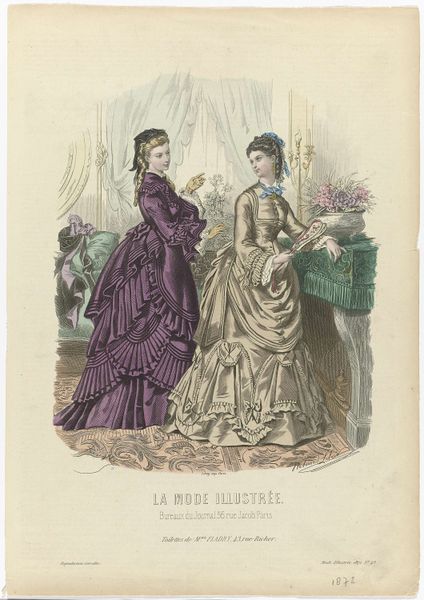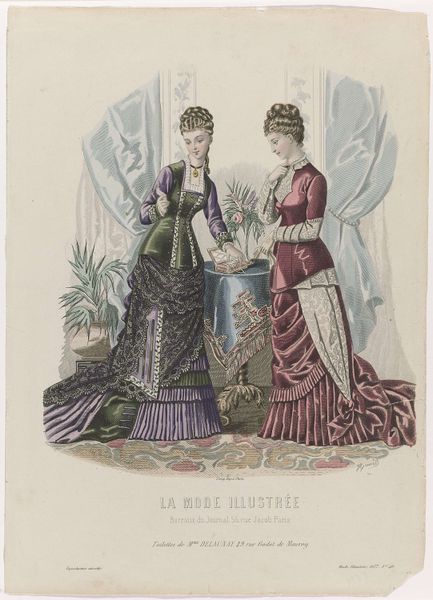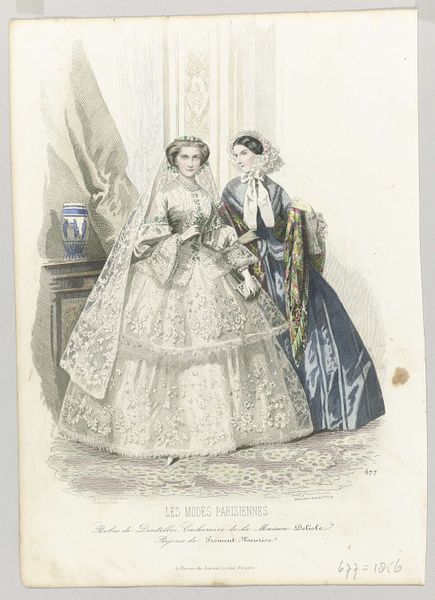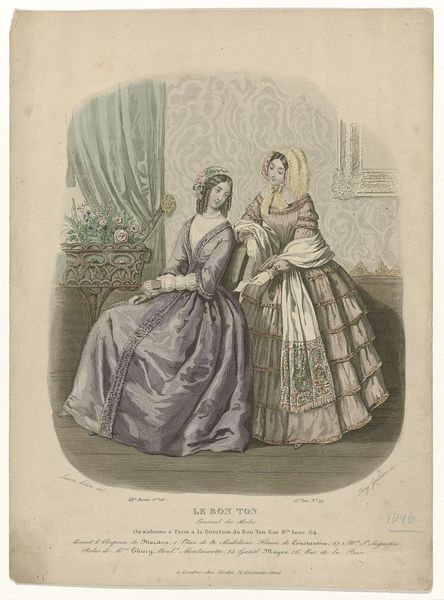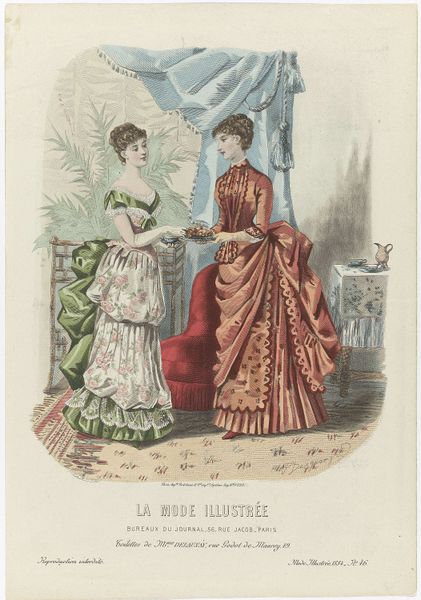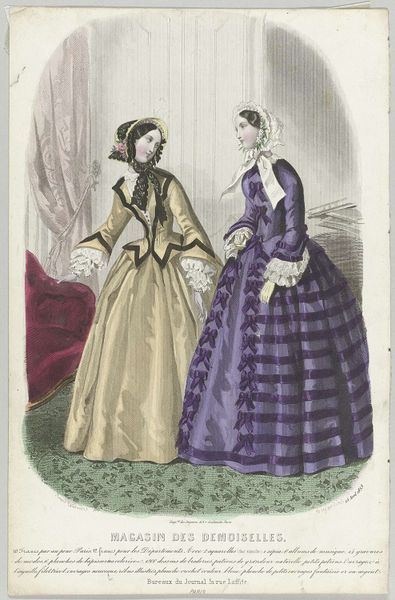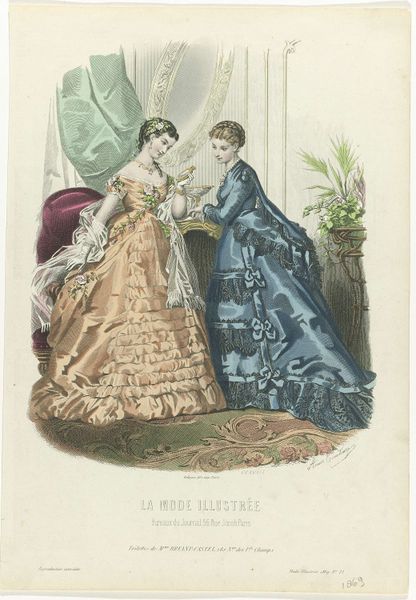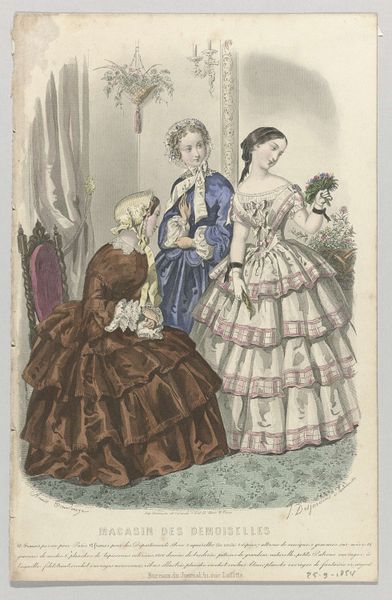
Dimensions: height 223 mm, width 176 mm
Copyright: Rijks Museum: Open Domain
Paul Lacourière created this print of Parisian fashions for the Journal des Demoiselles in 1873, using a lithographic process. Lithography is all about the interaction of grease and water. The artist would have drawn these figures on a flat slab of limestone with a greasy crayon, then chemically treat the stone so that ink adheres only to the drawn areas. By repeating this process with different stones and colors, a full image emerges. Prints like these were a vital link in the fashion ecosystem, connecting designers with consumers. Consider the labor embedded in these elaborate garments. Fabric production was increasingly mechanized, yet the intricate details, like lace and trimmings, still relied on skilled handwork. The image suggests not just aspiration, but also the complex social realities of labor, class, and consumption in 19th-century Paris. It reminds us that even fashion plates are artifacts of material culture.
Comments
No comments
Be the first to comment and join the conversation on the ultimate creative platform.
